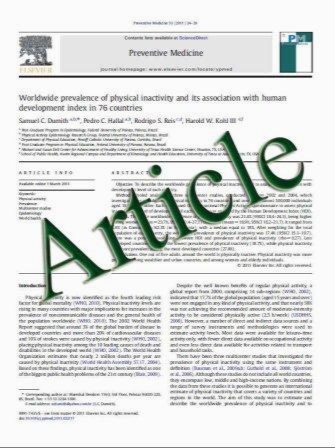Maternal periconceptional factors affect the risk of spina bifida-affected pregnancies: an Italian case–control study
- نوع فایل : کتاب
- زبان : انگلیسی
- مؤلف : Patrizia De Marco & Elisa Merello & Maria Grazia Calevo & Samantha Mascelli & Daniela Pastorino & Lucia Crocetti & Pierangela De Biasio & Gianluca Pia
- چاپ و سال / کشور: 2011
Description
Purpose Neural tube defects, including spina bifida and anencephaly, are the second most common birth defects with an incidence in Italy of 0.4–1/1,000. Information on factors playing a role in the pathogenesis of spina bifida is based on populations with different exposures, lifestyle, social and cultural habits compared to Italian people. Our objective was to fill this gap by using data from a case– control interview study carried out at the G. Gaslini Children’s Hospital, Genoa, from 2000 to 2008. Methods We surveyed questionnaires from 133 case mothers and 273 control women providing information on periconceptional risk factors. Univariate and multivariate logistic regression analyses were used to estimate risks by odds ratios (ORs) and 95% confidence intervals (95% CIs). Results Univariate results suggest that birth order, low maternal educational level, age, smoking habits, alcohol consumption, high caffeine intake, lack of folate supplementation, low and high calorie diet, occasional consumption of fruit and vegetables, high emotional stress, and environmental pollution are associated with an increased spina bifida risk. Nevertheless, high caffeine intake (OR= 10.82; 95% CI, 3.78–31), low calorie diet (OR=5.15; 95% CI, 1.79–14), occasional consumption of fruit and vegetables (OR=3.38; 95% CI, 1.67–6.82), alcohol consumption (OR=3.05; 95% CI, 1.24–7.50) and, above all, lack of folate supplementation at any time of pregnancy (OR= 20.54; 95% CI, 5.41–77) mainly determined spina bifida risk in the multivariate analysis. Conclusion Our findings point out that a common underlying mechanism, a disturbed folate/homocysteine metabolism, may be causative for the burden of spina bifida in the Italian population.
Childs Nerv Syst (2011) 27:1073–1081 DOI 10.1007/s00381-010-1372-y Received: 8 October 2010 / Accepted: 13 December 2010 / Published online: 5 January 2011


